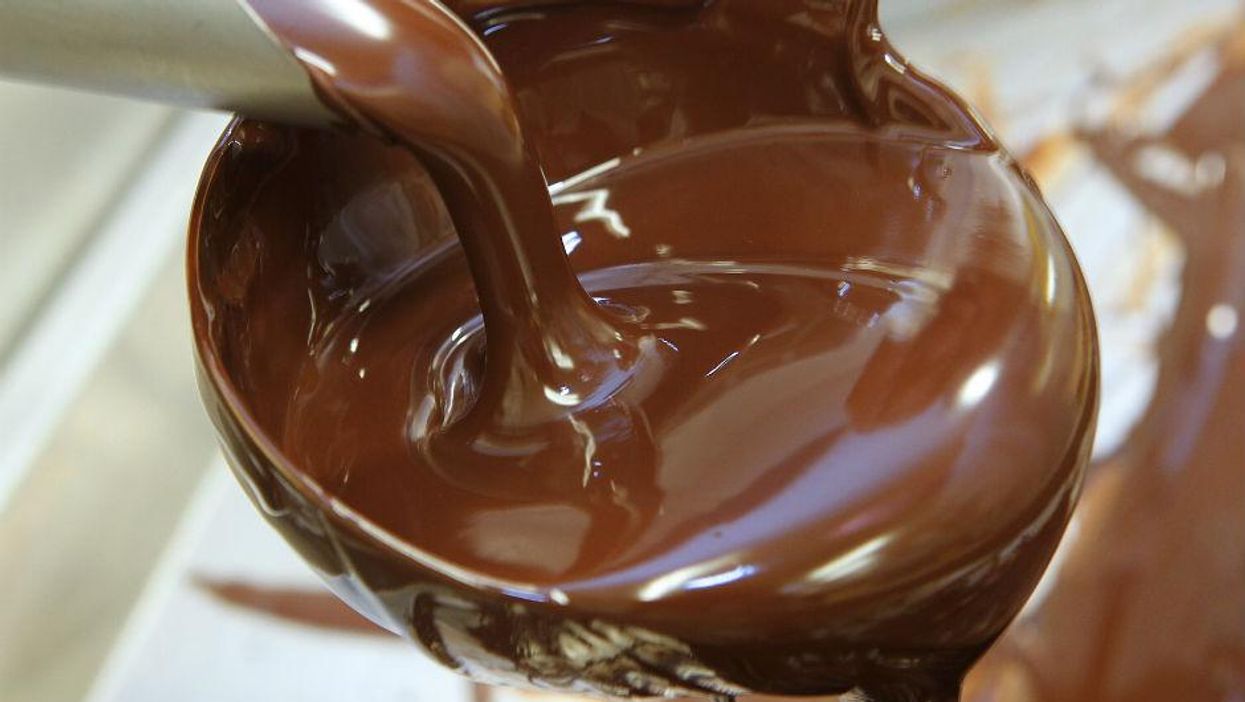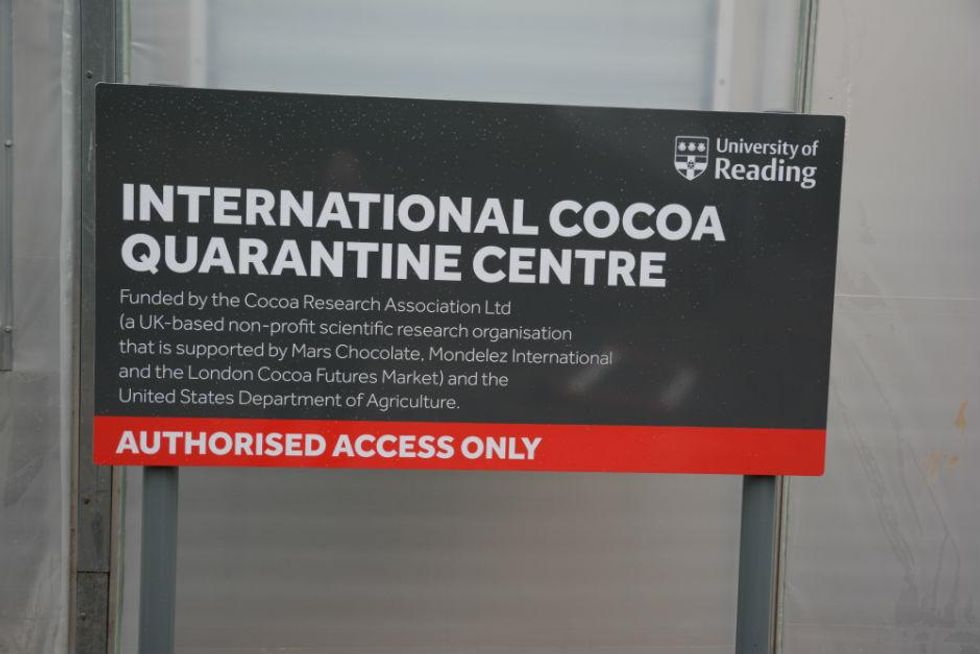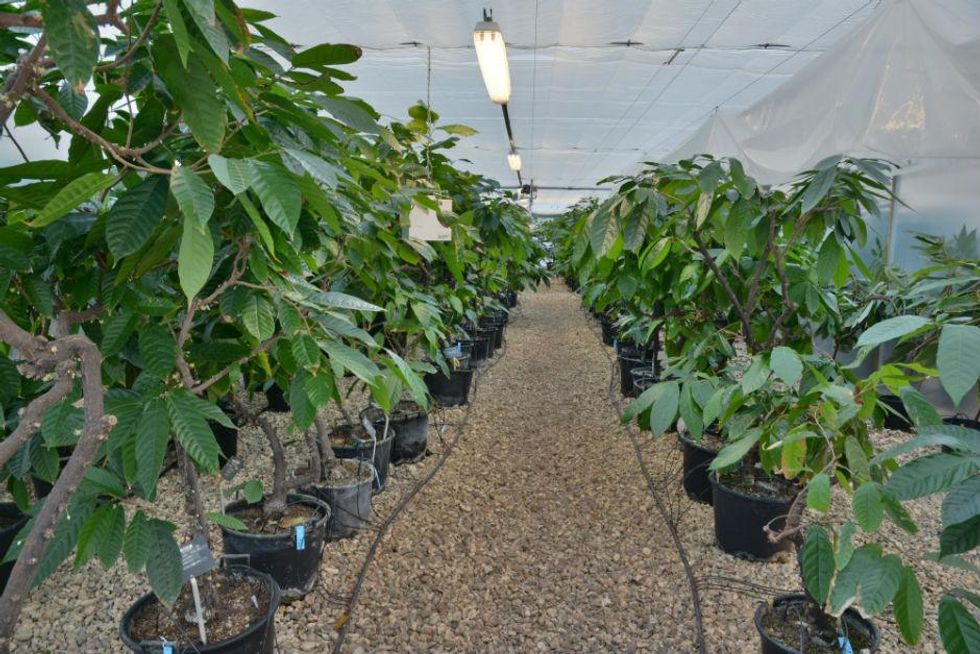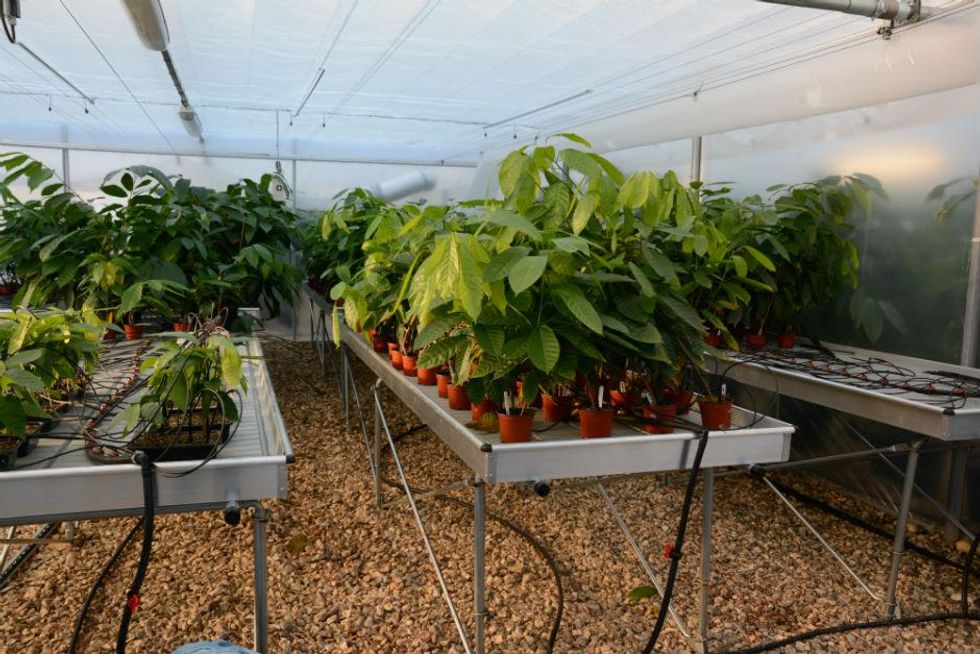Celebrities
Evan Bartlett
Jan 13, 2015

(Picture: Getty
A team of British scientists is leading the world's battle against declining stocks of cocoa in the face of soaring demand and the threat of deadly diseases.
Although global production of cocoa is rising, it is being easily outstripped by demand and as a result it is feared that shortages or price rises could occur if production does not keep up.
One way to combat this is to develop new varieties of cocoa that produce higher yields or are more resistant to disease - which is where Dr Andrew Daymond, Dr Paul Hadley and their team from the International Cocoa Quarantine Centre (ICQC) at Reading University come in.
While cocoa is native to South America most of the global supply is cultivated in West Africa where a virus called cocoa swollen shoot and insects called mirids are decimating crops.
In order to breed new varieties that can resist these blights, Dr Daymond explained to i100.co.uk that a diverse range of different types of cocoa are needed and these often need to be imported from abroad.
Importing those seeds from the countries where they grow in the wild brings with it the risk of disease. The ICQC effectively acts as an intermediary - receiving and testing native species before they are sent on to smaller research institutes and used by farmers.
In some cases these new plants would have been collected directly from the wild. So at various points people have gone into the Amazon and taken promising looking cuttings from cocoa plants.
Part of the reason we do this operation in the UK as opposed to the tropics is because we don't have endemic cocoa diseases in the UK - so there's no risk of those diseases coming in from outside.
- Dr Daymond speaking to i100.co.uk
When the plants arrive at ICQC - an institute which cost £1m to build - Dr Daymond explains that they are kept in an insect-proof cage for three months and treated with a protective spray. After that they are tested for diseases and moved into a new greenhouse tent. They can then be kept in the facility for up to two years before being sent off to other research institutes around the world.
The centre at Reading - where the majority of international movements of cocoa take place - has been running for 30 years, although it moved into a new 11,000 sq ft facility in November. It is part-funded by a number of private chocolate companies as well as the US Department of Agriculture.
So next time you tuck into a bar of Dairy Milk or Green & Blacks, be thankful that this team of dedicated cocoa guardians is making sure chocolate will be in plentiful supply for years to come.
More: Cambridge University needs a doctor of chocolate... seriously!
Top 100
The Conversation (0)
















